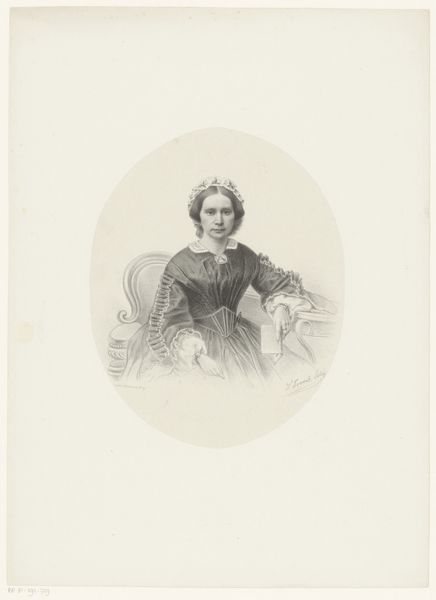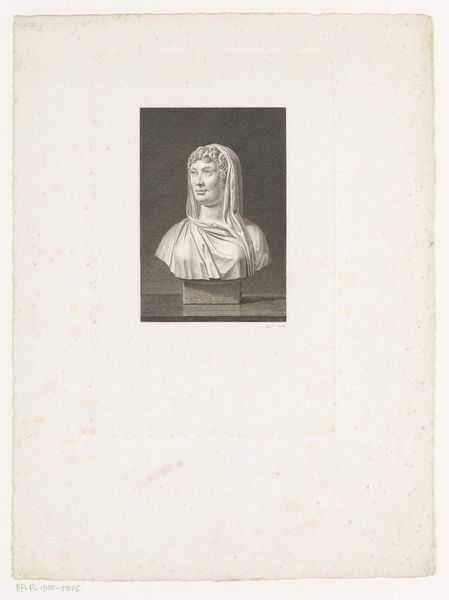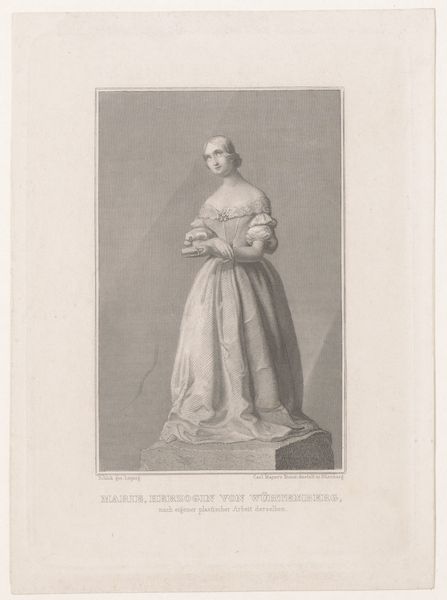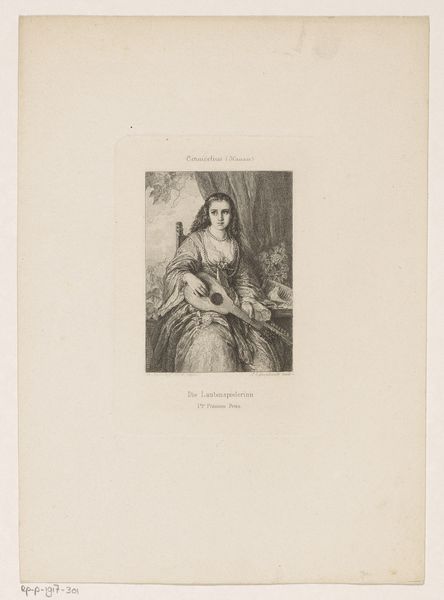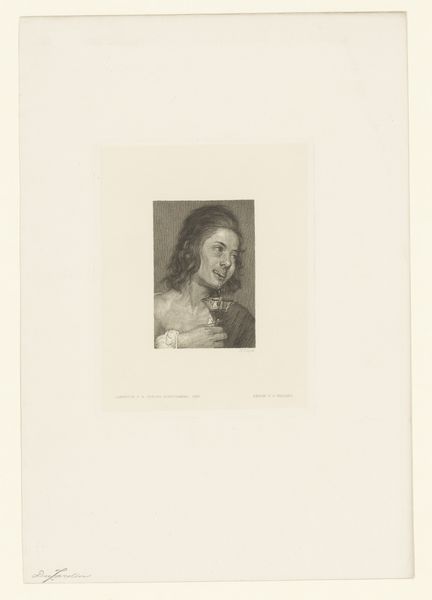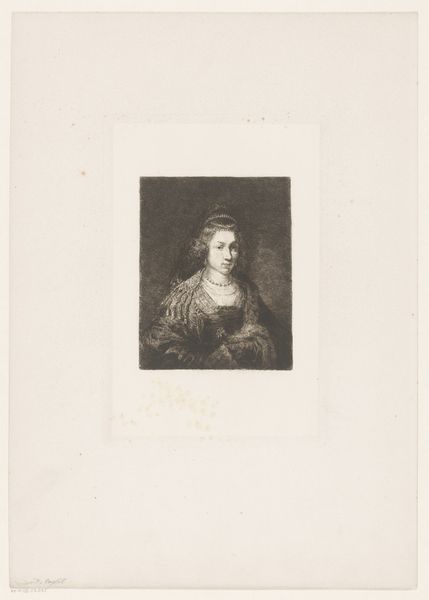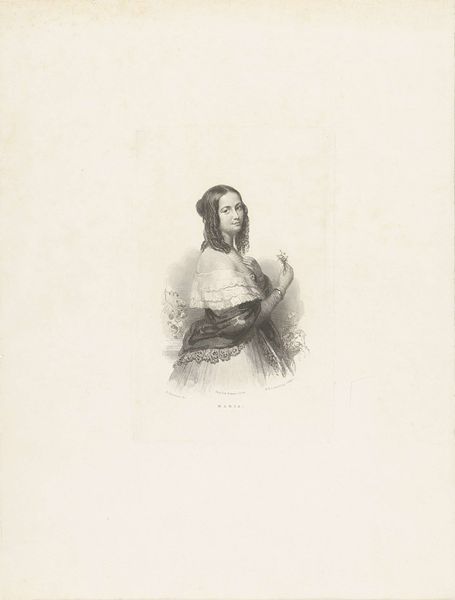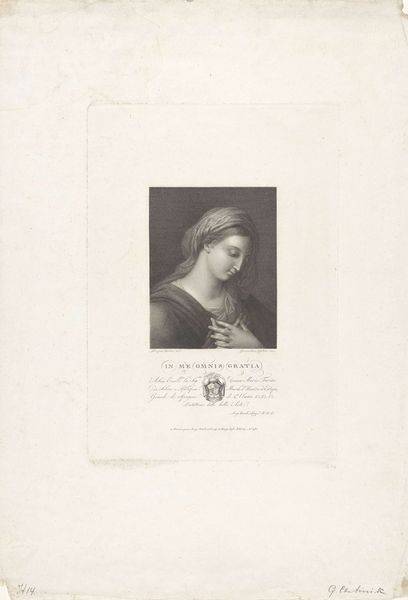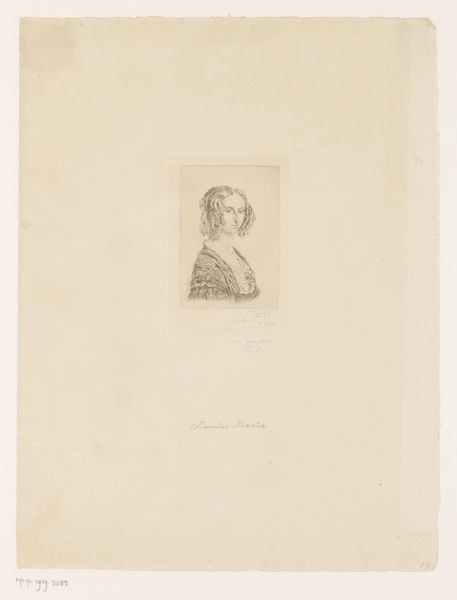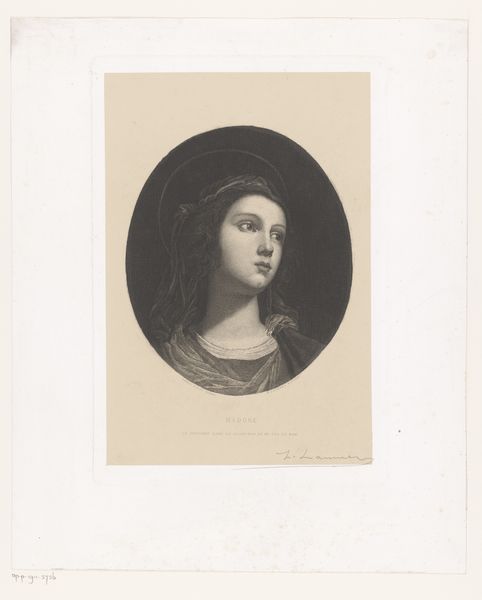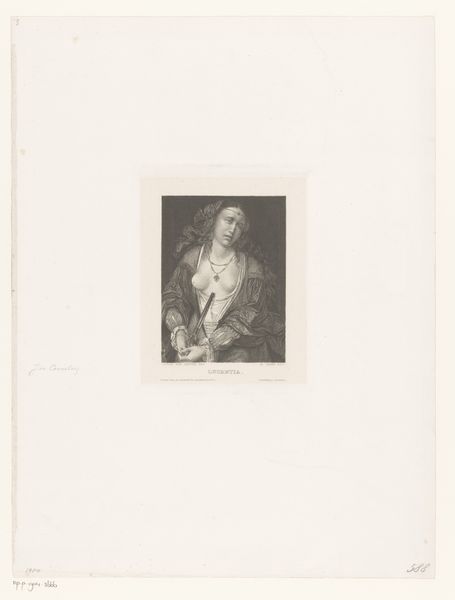
print, etching, paper, ink, engraving
#
portrait
#
ink paper printed
# print
#
etching
#
pencil sketch
#
paper
#
ink
#
genre-painting
#
academic-art
#
engraving
Dimensions: height 235 mm, width 173 mm
Copyright: Rijks Museum: Open Domain
Editor: So, this is "Young Woman from Florence" by Léopold Flameng, created in 1863. It's an etching, ink on paper… and it strikes me as a rather conventional portrait at first glance. How do you approach this piece? Curator: From a materialist perspective, it’s interesting to consider printmaking within a wider social and economic framework. Think about it: prints democratized art. It allowed for broader consumption. This wasn’t a unique, hand-painted image for a wealthy patron, but a reproducible commodity. Editor: That makes sense. So, how does the process of etching, specifically, inform our understanding? Curator: Etching involves a highly skilled labour process; a copper plate meticulously worked to create the image. But etching also meant these images became available to a wider, possibly middle-class, audience who might not otherwise have access to art. This introduces interesting questions about artistic value, labour and the changing function of art itself in the 19th century. Where does craftsmanship meet mass production? Editor: So the choice of materials and production has social and political implications. Did the academic art world embrace it, or resist this? Curator: The academic world both benefited from and critiqued it, fostering a hierarchical structure between original artwork and reproductive prints. Editor: Fascinating. I had viewed it merely as an aesthetically pleasing portrait. Now, thinking of the print as a multiple, it flips my original assessment. Curator: Exactly. Shifting the focus from subject to production really illuminates its place within 19th-century society. Editor: Definitely gives me a lot to consider in terms of production's impact and cultural reach! Thank you.
Comments
No comments
Be the first to comment and join the conversation on the ultimate creative platform.

